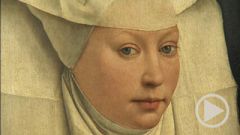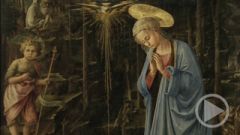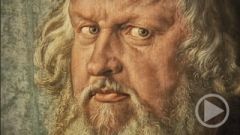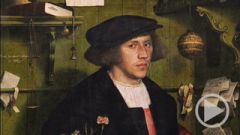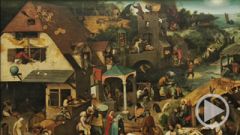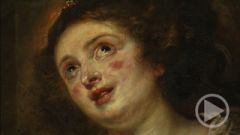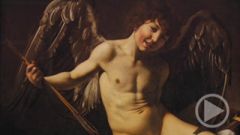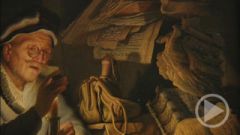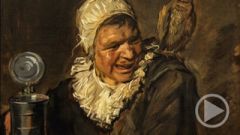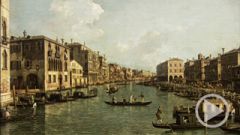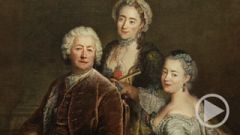- Home
- »
- Germany
- »
- Berlin
- »
- Gemaeldegalerie
- »
- The Berlin Gemaeldegallery -The Liberated Gaze
The Liberated Gaze
The Liberated Gaze
At the end of the nineteenth century, the Gemäldegalerie’s director was Wilhelm von Bode. He was respected and feared around the world for his expertise and his forceful personality. He profoundly enhanced the gallery's renown; he knew almost every picture and almost every collector and dealer in Europe. In 1897 he founded a circle of friends of the museum. It is active to this day, and is the oldest association supporting a state art museum in Europe. Bode also oversaw the construction of a new building, which housed the painting collection until 1997. For the last 50 years, it has born his name – the Bode Museum.
The gallery acquired this picture in 1903. It had been offered to the Borghese Gallery in Rome, but the Italian state wasn't interested. So the painting was put up for sale, and bought by a collector in Berlin, who then gave it to the Gemäldegalerie. Wilhelm von Bode recognised its true value: it was painted by the great Giovanni Bellini – and represents a milestone in the history of art.
Bellini completed the work in 1479 for the mortuary church in Venice. It shows the Resurrection of Christ: On Easter morning the three Marys are coming to visit Jesus's tomb, but it is empty. Soldiers should have been guarding it, but one of them is just waking up, another is still asleep, and the third is staring in amazement – for Jesus is risen and is hovering in the early morning sky.
And that is what is new here: linking the dawn and the resurrection. Jesus has risen up out of the darkness of death, as the light of the sun banishes the darkness of night. No painter before Bellini had made the natural phenomenon of dawn a religious symbol – not even in the Renaissance metropolis of Florence.

The smooth transitions between the yellow of the sun and the blue of the sky is typical of the Venetian style. While in Florence "disegno" – drawing or design – was accorded great importance, in Venice, "colorito" or colour was central. One reason was probably the special light there, the glistening of sunlight on the lagoon. Another was the availablity of precious pigments, brought from the Orient on merchant vessels to the port of Venice. Fine lapis lazuli, for example, can only be found in Afghanistan. Its brilliant shade of blue is still called ultramarine – "from beyond the sea".
Bellini was indebted to his father Jacopo for many new ideas. He had worked in Florence in the early 14-hundreds. Although his paintings remained deeply rooted in mediaeval traditions, his drawings explore ideas of the early Renaissance. Jacopo left two sketchbooks to his sons Giovanni and Gentile, who would find inspiration in them throughout their lives. Jacopo thus became the father of the Venetian School of painting.
Not only were Giovanni Bellini's father and brother also painters, his sister's husband was as well – Andrea Mantegna, who had a very prestigious job as court painter to the Duke of Mantua.
Mantegna's work has a sculptural quality. This picture almost looks like a relief. And he painted a stone frame for the scene – in line with a principle formulated by the great humanist Leon Battista Alberti: "A picture must be like a window." We look into the Temple: Joseph watches as Mary presents the baby Jesus to the Holy Simeon. A corner of the cushion extends beyond the painted frame; one is tempted to reach out and touch it – Mantegna involves the viewer in the picture.

And by the way, we see here – probably for the first time in European art – a painter AND his wife: on the right Mantegna, and on the left his wife Nicolosia, Bellini's sister. For decades Giovanni Bellini was the foremost artist in Venice. When he died in 1516, he was succeeded as city painter by his pupil Tiziano Vecellio – known to us as Titian. In 1530 Titian witnessed the coronation in Bologna of Charles the Fifth as Holy Roman Emperor, over whose realm it would be said "the sun never sets". Charles was so impressed by Titian's work that three years later he appointed him court painter and made him a Count Palatinate and Knight of the Golden Spur. But Titian remained city painter in Venice and did not like leaving his home town. Still, almost twenty years later he posed proudly wearing the golden chain of knighthood he had received from the emperor.
This painting probably shows Charles's son, who would later become King Philip the Second of Spain and who is known to have played the organ. Titian combines in this work two typically Venetian motifs: Venus resting, and a musician.
While any picture can be interpreted in a multitude of ways, a widely held view is that here Titian is illustrating the hierarchy of the senses, the rivalry between sight and hearing. Philip turns away from the sound of music in order to look upon the naked Venus and her son Cupid. Titian guides the gaze of the viewer – who, following Philip's gaze, first sees Venus's bosom, which Cupid is tenderly clasping. The eye then follows the swirls of soft velvet cloth up and around her naked body to its dangling end, which seems to point downwards – first to a tiny dancing couple in the landscape in the background, and then to Venus's loins.
This too is evidence of the new world view: The Middle Ages had been hostile to the body, but in the Renaissance the gaze was liberated. Openly erotic pictures were created, their subjects often drawn not from the Bible but from classical mythology. The balance between animal sensuality and civilised self-control is represented by the little dog: his eyes and teeth gleam wildly, yet he is a tamed beast – the dog being the first animal to have been domesticated.
There are six versions of this painting, all created around the year 1550. Titian was not too concerned... if a painting was well received, he had his workshop make new versions. This particular one, however, is so well painted that it must be by Titian himself. Consider also the landscape in the background: as with Bellini, it is not merely decorative but an important part of the composision.
Titian's work marked the highpoint of the Renaissance in Venice. A century later, Baroque painters still found inspiration in his ideas. The greatest painter of the German Renaissance, however, was already working in Venice at the time of Bellini – Albrecht Dürer.


